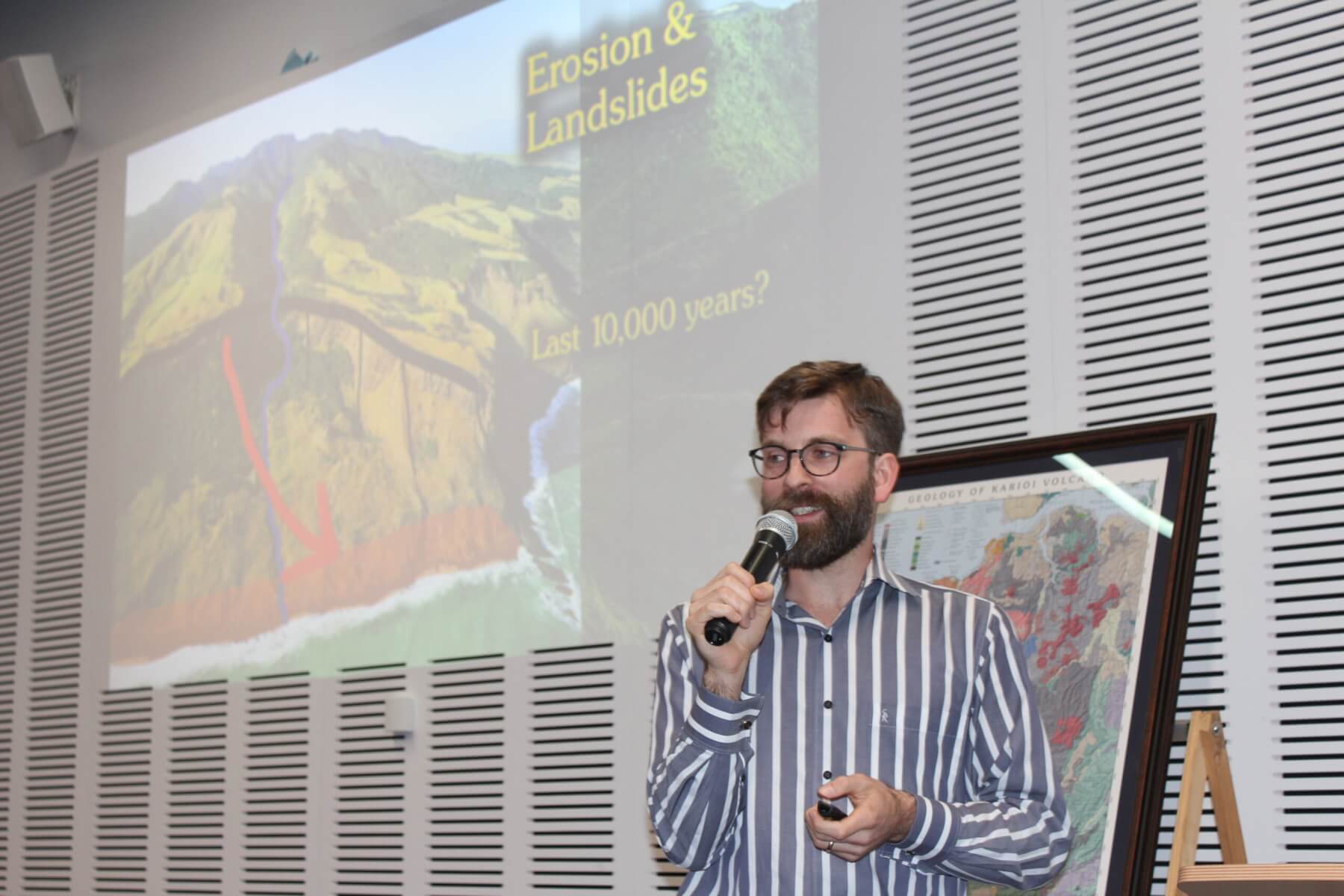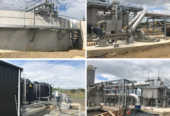A come-and-go lake near Raglan has been declared the oldest in New Zealand.

Oliver McLeod and Janine Krippner, pictured at last week’s presentation which included a book signing.
Lake Disappear – Mokaikaraka – is in a valley near Bridal Veil Falls dammed by lava flow 2.33 million years ago. It can be two kilometres long and 15 metres deep at one time of the year – and the drain to present as just a small stream
And nearby, timber which is older than Karioi itself and with bark attached is regularly found on the maunga.
The nuggets of information came out in an engaging presentation at Te Awamutu Library last week.
Oliver McLeod, from the Waikato Regional Council, was joined by Janine Krippner, who writes On Shaky Ground for the Cambridge News and Te Awamutu News, to discuss the geology of Karioi volcano – the title of his new book – and the field extending from it including Pirongia, Kakepuku and Te Kawa.
The pair are rock stars of a different type. McLeod explained that studying rocks enabled geologist to trace the history. Karioi as Ankaramite, Olivine basalt, Plagioclase-basalt, Andesite and Peridotite.
Ankaramite is McLeod’s favourite.
“My life’s mission is to share Ankaramite. My mum says it looks like concrete, but think it’s just beautiful, full of crystals and growth rings.”
McLeod’s four-year work, which was helped by sponsorship and crowd funding – follows the geological mapping of Karioi to show how it evolved – eruption by eruption – and changed in shape over millions of years. It follows a similar work on the younger Mt Pirongia.

Janine Krippner
His map of Karioi shows in different colours flows from each of a series of eruptions and the book’s illustrations include rock profiles where he identified layers which predate the maunga.
Another nugget was that Whale Bay – Te Marae o Mōkī – at Raglan is a lagoon – an unusual feature on the west coast – formed by a significant landslide.
Mt Taranaki today looks like Karioi and Pirongia would have 2.5 million years ago. Pirongia is the youngest of the four maunga – Te Kawa and Kakepuku are dated back 2.3 to 2.7 million years – but more work is required to determine the accuracy of that estimate.
Karioi had also gone through collapses similar to the Mount St Helens, south of Seattle, eruption in the US in 1980. Mt St Helens, not unlike Taranaki in profile, literally blew its top.
The work carried out by McLeod has also underlined similarities between what the Waipā maunga were like millions of year ago and what Auckland had with Rangitoto and its own field of volcanoes.
Krippner, who did the introduction by explaining she liked her volcanoes hot, said understanding those that were not enabled volcanologists to better understand active fields and how they might change.
At any one time 40 to 60 volcanoes would be erupting around the world, and 90 per cent are in the Pacific’s ring of fire – which includes New Zealand.
Thursday’s gathering attracted about 30 people – including one The News reader who arrived with a selection of Krippner’s weekly columns in a folder.

Oliver McLeod








